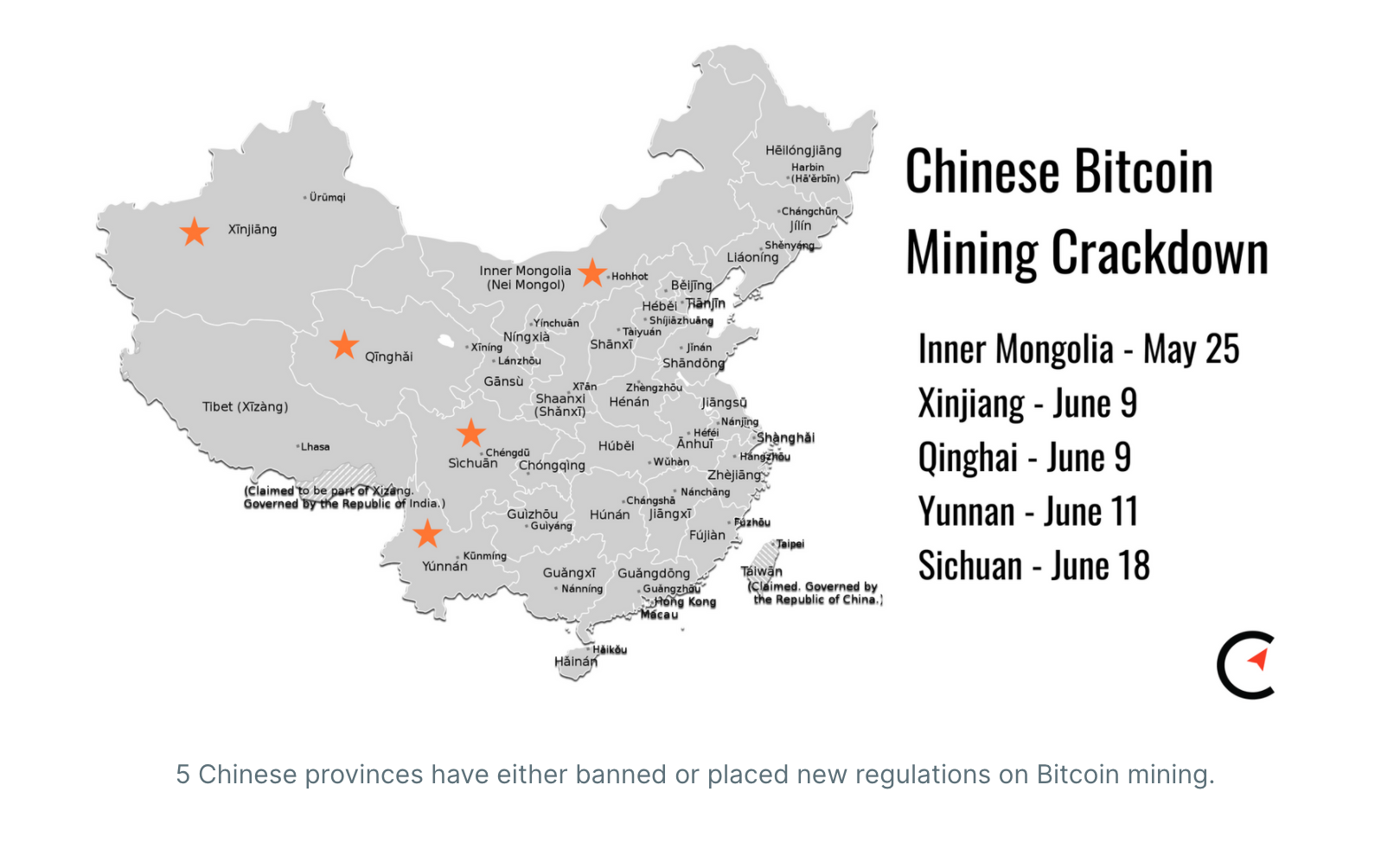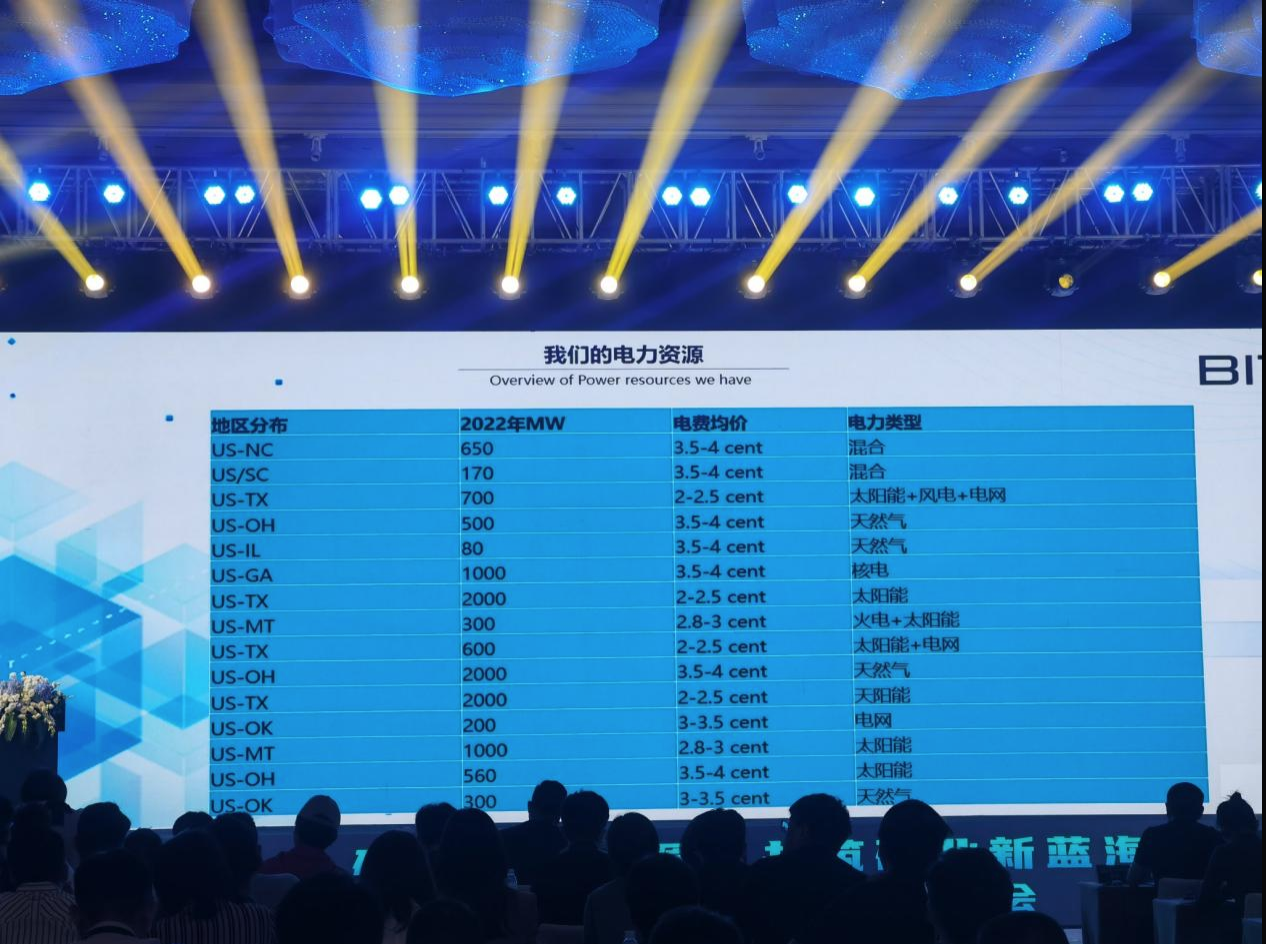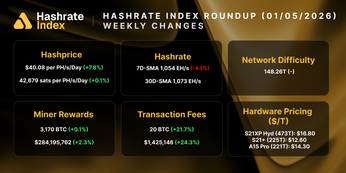
China Banned Bitcoin Mining—What Happens Now?
The great Chinese hashrate diaspora has begun. As Chinese miners debate what to do next, where can we expect all of this hashrate to migrate, and what are the logistical barriers facing miners in exodus?
- China has effectively banned large-scale mining, and miners in exodus are searching for new real estate for their operations.
- The diaspora from the historical epicenter of Bitcoin mining presents these miners with several logistical challenges: namely, where to go, what to do with their machines, and whether or not to build new farms or co-locate their machines.
- The shakeup furnishes mining professionals in other jurisdictions with a unique opportunity as China’s hashrate flows into other countries.
- Based on preliminary reports, the United States could benefit the most from this restructuring, along with Canada; countries in Central Asia and the Commonwealth of Independent States like Kazakhstan, Uzbekistan, and Russia; a few countries in Europe; and a handful of countries in South America.
It finally happened: the Chinese government is throwing the ban hammer on Bitcoin mining, or at the very least, severely restricting it.
About a month after officials issued a moratorium on coal-fired mining in China’s coal-rich Xinjiang and Inner Mongolia, the Qinghai and Sichuan provinces ordered all cryptocurrency miners in the regions to cease operations immediately, while another in Yunnan issued strict registration requirements. In Sichuan, once the heart of Bitcoin’s mining industry, power companies gave some miners one or two weeks’ notice to dismantle all their infrastructure.

The bans aren’t exactly shocking, but their sudden manifestation and stringency have left miners in the region reeling nonetheless. Roughly a million or so mining computers are now stranded in China, and miners are faced with a Rubik’s cube of logistical problems. Do they ship machines to new locations? Do they even have a new location to move them to? Maybe it would be easier to sell them — if they can find a buyer, that is. If they have a new location, how do they staff it properly? With their machines sitting idly by, miners are hemorrhaging potential profits as they search for answers to these questions so they are moving as quickly as they can.
Many of these miners are looking towards the United States (and the North and South American continents at large) to move their machines, while Kazakhstan, Russia, Canada, Iceland, and various locales in Central Asia are also seeing serious consideration. Still, competition for resources and warehouse space, as well as lack of trust between new and old market participants, creates barriers for coordination and business operations. Lacking connections with US mining professionals, Chinese miners may have trouble sourcing reliable mining real estate.
On that note, the larger the mining operation, the easier it will be for the team to coordinate a move (as we’ll see later with Bitmain’s efforts to move to the US). Smaller miners will face more obstacles when sourcing new rack space and risk falling out of the hash race entirely.
China’s mining ban marks perhaps the largest policy move of a major power against the Bitcoin industry. Moreover, the resulting miner diaspora simultaneously presents a daunting geopolitical puzzle for China miners and an unprecedented opportunity for mining professionals elsewhere, and it offers a once-in-a-blue-moon opportunity to restructure Bitcoin’s mining topography away from a country where it has been historically concentrated.
The coming migration will come with a slew of new challenges and questions, perhaps principally: will the Bitcoin network be swapping hashrate concentration from China to the U.S., or will it settle more distributedly across the globe?
Bitcoin Hashrate Drops Off a Cliff
To start, a quick primer on how much this ban affects the network’s hashrate.
Since Chinese miners began shutting down machines in response to the government’s order, the Bitcoin network has lost roughly 70 EH/s of hashrate. Zooming out even further, since May’s coal mining bans, Bitcoin’s hashrate has fallen from a peak of 171 EH/s to around 100 EH/s — a drawdown of 41%. Evaluating mining pool API data from MiningPoolStats, China’s top pools lost on average 33% of their hashrate since the announcement.
These figures align with estimates that place Bitcoin’s hashrate concentration in China at roughly 50-60%. It should be noted that China’s ban will likely only choke out large-scale mining operations and those connected to the grid; smaller operations and solo miners with few machines may fly under the radar (for now at least). Indeed, GPU-powered mining pools, like those for Ethereum, have not been as shaken up by the orders, perhaps because they are too small to be noticed or because the government doesn’t care as much about GPU mining.
For those who have to move, though, three questions are top of mind: Where will the miners relocate? ; what will they do with their machines? ; and will they host the machines with someone else or build their own farms?
Where Will These Miners Go?
The short answer: many are looking at North and South America and, specifically, the United States where strong rule of law may create better legal protections than what they were accustomed to in China. Long answer: they will end up all over (wherever they can find energy and rack space) and there’s still a lot of work to be done before we can reliably say where they will settle.
But we have some indication. Bitmain held a miner summit following the bans, and the primary discussion revolved around where dislocated miners could find cheap electricity and ASIC space.
As something of a substitute for the buckets of cheap energy they are used to in Sichuan and Xinjiang, these miners are looking to the United States for a combination of hydro, natural gas, coal, wind and solar energy.
The following slide is from the summit. Bitmain claims it has sourced 5300 MW of capacity in Texas, followed by 3060 MW in Ohio, 1300 MW in Montana, 1,000 MW in Georgia, 650 MW in North Carolina, 500 MW in Oklahoma, 170 MW in South Carolina and 60 MW in Illinois. In Texas, these facilities produce energy at a price of $0.02-0.025/kWh, whereas facilities in other states promise anywhere from $0.028-0.04/kwH. (The MW estimates Bitmain provided are likely exaggerated, but they give an idea of which states may have more freely-available energy).

With this cost difference in mind, it’s unsurprising that Texas is at the top of this list thanks to an abundance of natural gas and blossoming wind and solar arrays, so the state’s energy availability was a feature of the conference. As conveyed in a presentation from Lancium CEO Michael McNamara, Texas’ primary energy provider, ERCOT, only services Texas, and this centralization offers miners an advantage over other systems. Other grids are interconnected whereas Texas’ is completely localized, so miners could receive more consistent energy flows in ERCOT’s system while also competing with fewer consumers for resources.
Renewable energy accounted for roughly 30% of Texas’ energy mix in 2020, and this figure is expected to increase to roughly 40% by 2023. Texas is also home to one of the United States’ most favorable regulatory environments for Bitcoin.
Other Countries Under Consideration
Speaking to miners in the midst of exodus, Hashrate Index has learned that the following areas are top of mind outside of the US (in alphabetical order): Canada, Commonwealth of Independent States (CIS) members (primarily, Kazakhstan, Kyrgizstan, Russia, Ukraine and Uzbekistan), Iceland, Mongolia and South America (Argentina, Paraguay, Venezuela). There are others, but these are the most discussed currently, especially those Central Asian countries in the CIS which are in close proximity to China and which already have an entrenched Chinese mining community.
Still, these countries come with their own red tape and legislation, and some of their governments may be considered as equally hostile toward Bitcoin mining as China. Iran, for example, was on some miners' radars, up until authorities seized some 7,000 ASICs in dozens of raids this week.
Russia’s stance on Bitcoin may be seen as ambivalent or slightly unfavorable, seeing as the country, like China, recognizes Bitcoin as property but bars its use as a payment method. The Digital Financial Asset Act of 2020 allows Russians to set up mining ventures, but it also mandates that mining hardware must be owned by a foreign entity, while mining pool software and any currency exchange must be run by a foreign entity, as well. Given the abundance of cheap hydro in its Siberia region, Russia could be a solution in the short term for miners looking for a quick fix for their idle hashrate, but long term it remains to be seen if Russia’s stance towards Bitcoin mining (already not great) will become even more unfavorable.
A country like Kazakhstan, already a Bitcoin mining hub in its own right, promises miners cheap coal power for their operations (Indeed, BIT Mining Limited, the parent company of BTC.com pool, migrated part of its fleet to the country already). Regulations could present a slight problem, though, as Kazakhstan requires paperwork for imports and some miners in China operated their machines in a “legal grey zone,” so filing with officials to prove their machine’s origin when importing may be difficult.
Other Central Asian countries like Kyrgyzstan and Uzbekistan could also pick up the slack, largely thanks to their closeness to China and abundance of oil and coal and, in Uzbekistan, hydro. This year, Uzbekistan legalized bitcoin trading and mining and even made the asset tax free, making it one of the more crypto-friendly nations on the migration list; in Kyrgyzstan, bitcoin is legally recognized as a commodity which can be traded and mined, but it is not legal to use domestically as a means of payment. Even though Bitcoin is legally protected in these countries, cryptocurrency is still largely misunderstood by officials and locals, one of Hashrate Index's sources noted, so miners may encounter resistance from officials and professionals when they try to make inroads in these countries.
Like other Central Asian countries, Mongolia (not to be confused with Inner Mongolia) is attractive to miners since it is in China’s backyard, so to speak, and it offers an abundance of cheap coal.
Western countries like Canada and Iceland may provide favorable regulatory environments for miners, as well as gushes of renewable energy. Canada, however, has historically presented near-insurmountable challenges for Bitcoin companies looking to secure banking relations, though this is unlikely to present a challenge to miners who already have financing.
For South America, Paraguay could offer some of the most favorable regulatory conditions in the region. If a pending bill is approved, miners will be able finance operations with their cryptocurrency holdings in the state and given access to other crypto-specific financing options. Historically a hyper-restrictive area for Bitcoin activity, mining is now legally protected in Venezuela after an order from the country’s cryptocurrency superintendent. Bitcoin is considered a currency in Argentina but not legal tender, but otherwise little formal legislation addresses cryptocurrency. Each of these nations relies heavily on hydro; Paraguay, for instance, exports a majority of the electricity it produces at the Itati hydro-plant to neighboring countries.
These jurisdictions, especially those in the western hemisphere, could offer greener legal pastures for Bitcoin miners. But moving to these American locales specifically would present larger logistical headaches for miners when evaluating shipping expenses and the cost of building a new farm from scratch.
What Happens to the Machines?
Speaking of shipping, what would it cost to move all that equipment?
If we assume that roughly 70 EH/s of mining machines were taken offline, and we (very roughly) assume further that, say, 50% of this hashrate came from the newest generation machines while another 50% came from older generation machines, then we figure over 15500 metric tons of equipment is now collecting dust in China.
But don’t just take our word for it. Compass Mining’s Will Foxley crunched the numbers himself and found that roughly 15,955 metric tons of equipment reside in China (or roughly 1 million machines). Foxley figures that this would cost just under $8.2 million to ship on a sea-bound freight the size of the Ever Given, that behemoth that was lodged in the Suez Canal for a week or so. For comparison, the roughly 70 EH worth of machines that are now sitting idle could produce roughly $15.4 million per day with Bitcoin’s current hash price.
Yes, China’s entire ASIC population could fit on one of the world’s largest shipping freights, but that rests on the quixotic assumption that every miner coordinates with each other to ship their rigs on the same ship, to the same location (not going to happen). Further, this does not factor in shipping costs to port, which could be every magnitude as expensive (or more expensive) than an overseas trip (it’s important to note that these machines are in the heart of the country in most cases).
There are reports that indicate miners are already shipping if they have the ability. CNBC anchor Eunice Yoon reported that one mining collective has begun airlifting 3 metric tons of machines for the price of $9.37 a kg, though as evidenced by our back of the napkin math, this is just a drop in the bucket. As we touched on in the previous section, a farm owned by the BTC.com mining pool has relocated a small batch of 320 machines to Kazakhstan and plans to ship another 2,600 by July. The farm said that it will ship the rest overseas at an unspecified date.
Beyond shipping costs and logistics, there are a multitude of other sneaky variables still that could affect this process; for example, a lot of these mining machines are not up to code with Western standards (e.g., some use aluminium transistors instead of copper ones, which aren’t legal in the United States).
Rack Space and “Giving Up the Farm”
Perhaps the prior two shipping anecdotes are a bellwether for whether or not miners will ship machines if they have the choice. But there’s the rub: do they have a place to ship them in the first place? Rack space outside of China was scarce before the ban, and now demand is even greater, so this could lead some miners to construct new farms out of necessity.
Indeed, sourcing warehouse / rack space and labor may be the largest headache for these miners. Per Bitmain’s research on energy availability in the United States, sourcing power is only part of the equation; the rest of the calculation must factor in how to acquire rack space (either through purchase or construction) and who will run the facilities.
For some miners, this could be as simple as hosting at someone else’s operation or a co-location facility. Bu trust and reliable sourcing can create barriers for some miners when seeking out hosts, and this problem is especially pressing for smaller operations that aren't as well connected. For example, if a mining firm has no reliable contacts in a country, they could risk being defrauded when setting up deals.
But even when you know the provider, this option comes with tradeoffs. Miners who host with a third party relinquish control over all aspects of their machines, from basic operations to maintenance.
As such, some would prefer to build a new farm from scratch. But of course, this comes with the onus of sourcing real estate, purchasing raw materials for construction, hiring a construction crew, building the farm itself, and hooking it up to the power source. Miners who go this route will have to move fast if they want to maintain a competitive edge, but they also risk overbuilding rack space in the interim as hashrate settles and the market figures out the best geographic balance based on available space. (For example, a mining company expecting, say, 40% of China’s hashrate to migrate to the US may build out 300 MW of capacity in Texas only to overextend themselves if, say, only 30% makes the move).
For a quick and rough side-by-side comparison, in North America, a typical mining farm costs roughly $120,000 per MW to build (this excludes the cost of real estate), while hosting with a third party costs at least $200,000 per MW. For some miners, the latter could be a more profitable short term solution solely because they can plug in and mine as soon as they can ship their machines. For others, building may make more sense if they have too many machines to host with a third party or if they are optimizing for a longer time horizon.
A New Dawn for Bitcoin Mining
This ban dislocated a mining industry historically concentrated in China, and as such the shakeup presents a rare opportunity to restructure Bitcoin’s mining topography in a time when Bitcoin’s market is more mature than ever — dare we say mainstream. This did not happen organically, but like a controlled burn in a large forest, the inferno is causing short-term destruction which could promote long-term growth.
Perhaps obviously, China’s orphaned miners rely first and foremost on their networks to answer the question, “Where do we go from here?”. When scouting for power, rack space and staff, they rely on word of mouth from reputable sources to make their way. As such, it’s likely that many miners will migrate in flocks.
This is partially why the United States has emerged as one of the go-to occasions post ban. With the largest mining company in the game, Bitmian, leading the charge with its energy availability research, other miners will follow the leader down this already trailblazer path. Indeed, one source told Hashrate Index that Bitmain is working on a shipping service for miners, and some miners are waiting to see what the service offers before moving forward with their migrations.
Given the trends we have observed, Hashrate Index anticipates that a non-trivial share of China’s hashrate will move to the United States, somewhere between 30-40%. With this immigration, a new balance of power for mining pools will come with it. We anticipate over 40 EH will be managed by US-based mining pools by the end of 2021.
As miners leave China and settle elsewhere, some other trends we anticipate:
- A drop in ASIC prices as miners liquidate their machines (indeed, we can already observe a dip here, though this is no doubt also in response to Bitcoin’s anemic price).
- Increase in the value of hashrate, as difficulty levels stay depressed for extended periods of time. This will result in higher mining profitability and valuations for non-China based miners given the reduction in mining competition.
- An increase in Bitcoin and/or mining specific legislation and regulations as jurisdictions absorb industry participants and as nation states respond to China’s ban with their own laws.
- Many miners migrate to new pools within their new jurisdictions, as counterparty risk with Chinese pools increases and the mining pool business continues to integrate into the financial services stack.
The migration will be messy. Unforeseen problems will surface, trends will change, and it will take at least a year if not longer before the dust settles. But once things smooth over, the dispersion of miners will likely be a boon for the network in the long run as hashrate becomes even more distributed across various jurisdictions.
Are you a miner or a provider who needs help sourcing equipment or coordinating with miners? Luxor Technologies is here to help: contact us at [email protected]
Hashrate Index Newsletter
Join the newsletter to receive the latest updates in your inbox.







